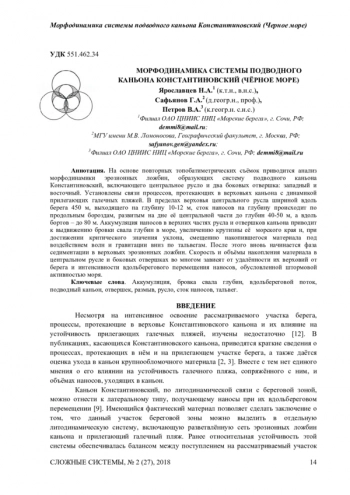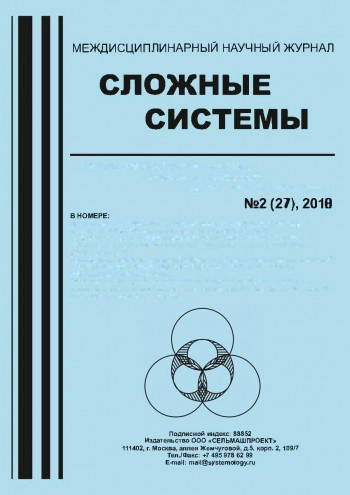На основе повторных топобатиметрических съёмок приводится анализ
морфодинамики эрозионных ложбин, образующих систему подводного каньона
Константиновский, включающего центральное русло и два боковых отвершка: западный и
восточный. Установлены связи процессов, протекающих в верховьях каньона с динамикой
прилегающих галечных пляжей. В пределах верховья центрального русла шириной вдоль
берега 450 м, выходящего на глубину 10-12 м, сток наносов на глубину происходит по
продольным бороздам, развитым на дне её центральной части до глубин 40-50 м, а вдоль
бортов – до 80 м. Аккумуляция наносов в верхних частях русла и отвершков каньона приводит
к выдвижению бровки свала глубин в море, увеличению крутизны её морского края и, при
достижении критического значения уклона, смещению накопившегося материала под
воздействием волн и гравитации вниз по тальвегам. После этого вновь начинается фаза
седиментации в верховьях эрозионных ложбин. Скорость и объёмы накопления материала в
центральном русле и боковых отвершках во многом зависят от удалённости их верховий от
берега и интенсивности вдольберегового перемещения наносов, обусловленной штормовой
активностью моря.
The analysis of morphodynamics of erosion troughs, which form the system of the
underwater canyon Konstantinovsky, including a central channel and two lateral openings, is given on the basis of repeated topobatimetric surveys: the western and the eastern. The connections of the processes taking place in the upper reaches of the canyon with the dynamics of the adjacent pebble beaches are established. Within the upper course of the central channel 450 m wide along the coast, reaching a depth of 10-12 m, the sediment runoff to the depth occurs along the longitudinal grooves developed at the bottom of its central part to depths of 40-50 m and along the sides to 80 m.
Accumulation sediments in the upper parts of the channel and the openings of the canyon leads to the extension of the dump of the depths in the sea, the increase in the steepness of its sea edge and, when the critical slope is reached, the accumulated material is displaced by waves and gravity down the thalweg. After this, the sedimentation phase begins again in the upper reaches of the erosion troughs.
The speed and volume of accumulation of material in the central channel and lateral holes largely depend on the remoteness of their upper reaches from the shore and the intensity of the long-range transport of sediments caused by the stormy activity of the sea.




